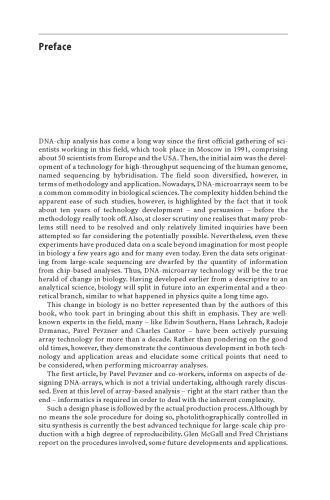

Most ebook files are in PDF format, so you can easily read them using various software such as Foxit Reader or directly on the Google Chrome browser.
Some ebook files are released by publishers in other formats such as .awz, .mobi, .epub, .fb2, etc. You may need to install specific software to read these formats on mobile/PC, such as Calibre.
Please read the tutorial at this link: https://ebookbell.com/faq
We offer FREE conversion to the popular formats you request; however, this may take some time. Therefore, right after payment, please email us, and we will try to provide the service as quickly as possible.
For some exceptional file formats or broken links (if any), please refrain from opening any disputes. Instead, email us first, and we will try to assist within a maximum of 6 hours.
EbookBell Team

0.0
0 reviews
ISBN 13: 9783540432159
Author: Jorg Hoheisel
DNA-chip analysis has come a long way since the first conference in Moscow in 1991. Nowadays, DNA-microarrays seem to be a common commodity in biological sciences. The complexity hidden behind the apparent ease of such studies, however, is highlighted by the fact that it took about ten years before the methodology really set off. Also, on closer scrutiny, one realises that some problems still remain. Nevertheless, microarrays produce data on a scale beyond imagination a few years ago. The authors of the book took part in bringing this about. They are well-known experts in the field, many - like Edwin Southern, Hans Lehrach, Radoje Drmanac, Pavel Pevzner and Charles Cantor - have been actively pursuing array technology for more than a decade. They demonstrate the continuous development in both technology and application areas and elucidate on critical points that need to be considered when performing microarray analyses.
Tags: Jorg Hoheisel, Chip, Technology